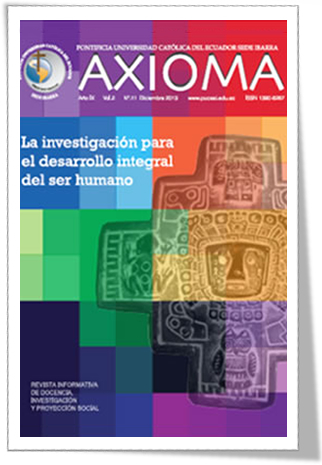Student Ìs analysis profile of psychology through SDS stocktaking
Main Article Content
Abstract
The present paper examines the vocational profile of a simple of 426 undergraduate students of Psychology, using the professional interests inventory SDS (Self-Directed Search) from Holland (1994). The SDS states the existence of six different personality types, associated with their respective work environments: Realist (R), Investigative (I), Artistic (A), Social (S), Enterprising (E), and Conventional (C). The relationships between these six typologies are organized in a hexagonal array, in which adjacent types are closely related, and types placed at opposite places of the hexagon are less related. This hexagonal structure was partially confirmed by the data using Multidimensional Scaling (MDS). Additionally, the results showed that the average profile of the Psychology students was, as would be expected, closer to S type per-sonality, although significant differences were found with respect to both gender and the psychological speciality areas (Clinical, Educational, Social, or Mixed) chosen by the students.
Downloads
Article Details
Con la finalidad de contar con un tipo de licencia más abierta en el espectro que ofrece Creative Commons, a partir de diciembre de 2022 desde el número 27, AXIOMA asume la Licencia Creative Commons 4.0 de Reconocimiento-NoComercial-CompartirIgual 4.0(CC BY-NC-SA 4.0). Tanto el sitio web como los artículos en sus diferentes formatos, reflejan esta información.
![]()
Hasta el mes de noviembre de 2022 con el número 26, la revista AXIOMA asumió una Licencia Creative Commons Atribución-NoComercial-SinDerivadas 4.0 Internacional (CC BY-NC-ND 4.0). Los artículos contenidos en cada número hasta el 26, cuentan con esta licencia y su descripción se conserva en el portal de nuestra revista.
Atribución-NoComercial-SinDerivadas
CC BY-NC-ND
AXIOMA- Revista Científica de Investigación, Docencia y Proyección Social
References
Einarsdottir, S., Rounds, J., Ægisdottir, S. & Gerstein, L. H. (2002). The structure of vocational interests in Iceland: Examining Holland’s and Gati’s RIASEC models. European Journal of Psychological Assessment, 18, 85–95
Gati, I. (1991). The structure of vocational interests. Psychological Bulletin, 109, 309-324.
-------- (1982). Testing models for the structure of vocational interests. Journal of Vocational Behavior, 21, 164-182.
Hedrih, V. (2008). Structure of vocational interests in Serbia: Evaluation of the spherical model. Journal of Vocational Behavior, 73, 13-23
Holland, J. L. (1997). Making vocational choices (3rd ed.). Odessa, FL: Psychological Assessment Resources.
-------------- (1985). Manual for the Vocational Preference Inventory. Odessa, FL: Psychological Assessment Resources
--------------(1973). Making vocational choices: A theory of careers. Englewood Cliffs, NJ: Prentice-Hall.
Holland, J. L., Fritzsche, B. A. & Powell, A. B. (1994). Self-Directed Search technical manual. Odessa, FL: Psychological Assessment Resources, Inc
liescu, D., Ispas, D. & Illie, A. (2013). The structure of Vocational Interest in Romania. Journal of Counselling Psychology, 60(2), 24-302
oeng, J., Turner, S. & Lee, H. (2013). South Korean College students’ Holland Types and Career Compromise Processes. The Career Development Quarterly, 61, 64-73.
Kruskal, J. B. &Wish, M. (1978). Multidimensional Scaling. CA; Sage, Newbury Park.
Lounsbury, J., Levy, J., Park, S., Gibson, L. &Smith, R. (2009). An investigation of the construct validity of the personality trait of self-directed learning. Learning and Individual Differences, 19, 411–418.
Maroño, T. & Real, J.E. (2010). Encuesta para analizar el perfil vocacional de 426 Estudiantes de la Facultad de Psicología de la Universidad Santiago de Compostela. España
Nagy, G., Trautwein, U. &Lüdtke, O. (2010). The structu-re of vocational interest in Germany: Different methodo-logies, different conclusions. Journal of Vocational Be-havior, 76, 153-169
Nauta, M. (2010). The Development, Evolution, and Sta-tus of Holland’s Theory of vocational Personalities: Re-flections and Future Directions for Counseling Psycholo-gy. Journal of Counseling Psychology, 57(1), 11–22.
Prediger, D. J. (1982). Dimensions underlying Holland’s hexagon: Missing link between interests and occupa-tions? Journal of Vocational Behavior, 21, 259-287
Rounds, J. & Tracey, T. J. G. (1996). Cross-cultural structural equivalence of RIASEC models and measu-res. Journal of Counseling Psychology, 43, 310–329.
uff, E. A., Reardon, R. C. &Bertoch, S. C. (2008, June). Holland’s RIASEC theory and applications: Exploring a comprehensive bibliography. Career Convergence. Recuperado de http://ncda.org/aws/NCDA/pt/sd/news_article/5483/_self/layout_ccmsearch/false.
Su, R., Rounds & J., Armstrong, P. (2009). Men and Things, Women and People: A Meta-Analysis of Sex Differences in Interests. Psychological Bulletin, 135(6), 859-884
ang, M. (2001). Investigation of the structure of vocational interests of Chinese college students. Journal of Career Assessment, 9, 365-380
Turner, S., Betz, N., Edwards, M. & Borgern, F. (2010a). Psychometric Examination of an Inventory of Self-Efficacy for the Holland Vocational Themes Using Item Response Theory. Measurement and Evaluation in Counseling and Development, 43(3), 188–198.
Turner, S., Conkel, J., Starkey, M. & Landgraf, R. (2010b). Relationships among Middle-School Adolescents’ Vocational Skills, Motivational Approaches, and Interests. The Career Development Quarterly, 59, 154-168.
Tracey, T. J. G., & Rounds, J. (1996). The spherical representation of vocational interests. Journal of Vocational Behavior, 48, 3-41
------------------------------------- (1995). The arbitrary nature of Holland’s RIASEC types: A concentric-circles structure. Journal of Counseling Psychology, 42, 431-439
Yang, W., Lance, C. & Hui, H. (2006). Psychometric properties of the Chinese Self-Directed Search (1994 edition). Journal of Vocational Behavior, 68, 560-576.

